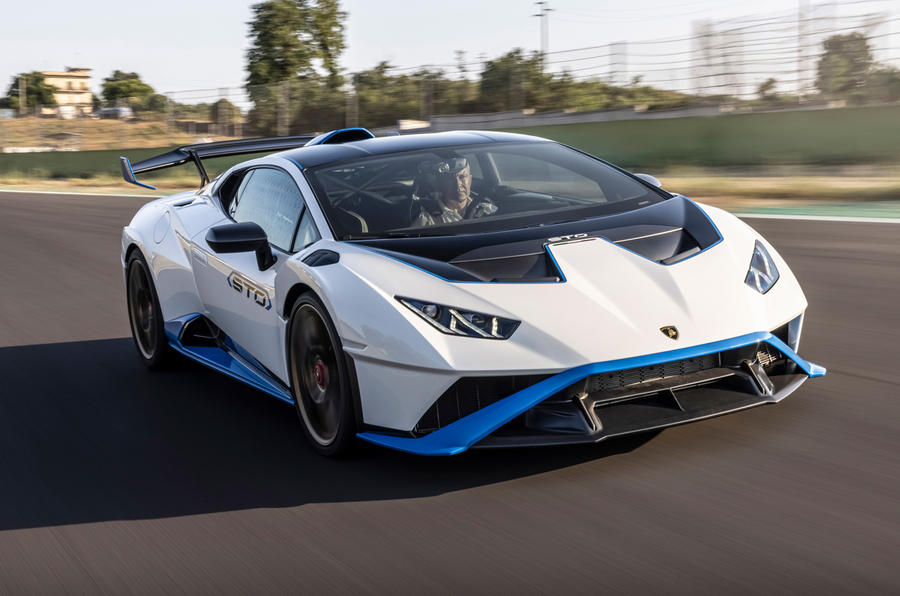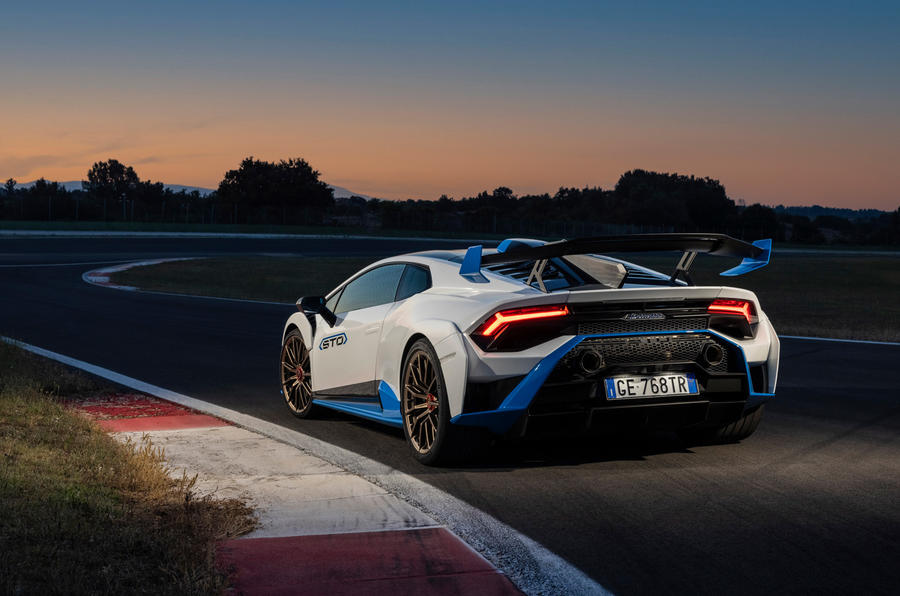What is it?
Plenty of Lamborghinis have proved their ability to perform on track. Indeed, both the Lamborghini Huracán Performante and the Aventador SVJ are previous holders of the Nürburgring Nordschleife lap record for a production car.
But the Huracán STO marks a new direction for the supercar maker, as the first derivative that Lamborghini has designed around a brief of regular circuit use. It’s targeting the same part of the market as the McLaren 765LT and Mercedes-AMG GT Black Series.
STO stands for Super Trofeo Omolagata (Italian for homologation), as a fair amount of its go-faster technology is drawn from the car used in the Super Trofeo one-make racing series. The STO isn’t as fast around a circuit as its slick-shod sister, but our first drive on the Vallelunga track near Rome proved that it’s almost certainly more fun on track.
The STO’s engine is probably the least changed thing about it. This is Lamborghini’s long-serving naturally aspirated 5.2-litre V10, making the same 631bhp peak power that it did in the Huracán Performante – that figure obviously some way adrift of its turbocharged rivals’.
It can’t match them on torque, either, with the peak of 416lb ft arriving at a high 6500rpm. But it revs to a sonorous 8500rpm and delivers urge to the back axle through a seven-speed dual-clutch automatic gearbox .
The STO being rear-wheel drive rather than four-wheel drive has saved only a relatively modest 20kg, according to Lamborghini chief technical officer aurizio Reggiani, but more mass has been saved with lighter bodywork (most of the panels are carbonfibre) plus a stripped-out interior in which the carpeting is replaced by rubberised matting. Even the windscreen is thinner. Despite the 8kg additional weight of an active rear-steering system, the resulting 1339kg dry weight is 43kg less than that of the Huracán Performante.
Aerodynamic changes are the area where the STO owes most to the Super Trofeo, losing the regular Huracán’s adaptive systems and gaining a vast, double-element rear wing with three manually adjustable positions. Working in conjunction with the huge front splitter, the most aggressive of these generates 420kg of downforce at 174mph (the others make 363kg and 324kg respectively).
The STO rides on new Bridgestone Potenza tyres, offering a choice between Cup and Race spec, the latter being close to road-legal cut slicks. Motorsport-grade Brembo CCM-R carbon-ceramic brakes, similar to those fitted to the McLaren Senna, complete the list of good stuff.



















































Join the debate
Add your comment
Lamborhgini's shouLd be purpLe with avec yeLLow Jeune wheeLs. There are so many women, femme at Le OLympics. ToKyo 2021. Toyota Bridgstone, Hydrogen cars, I thinK.
Kerb weight (DIN) of 339kg 'dry'??
Seems truly miraculous...